In the vast landscape of computer programming, two prominent methodologies have shaped the way programmers approach problem solving and software development: object-oriented programme (OOP) and structured programming. These methodologies represent different paradigms, each with its own set of principles, practices, and programming languages.
This blog outlines the key distinctions between object-oriented and structured programming, exploring their characteristics, applications, and the impact they have on the world of software engineering.
The foundation: structured programming
Structured programming emerged in the late 1950s with the appearance of computer programming languages ALGOL 58 and ALGOL 60. It wasn’t until 1968 that the term “structured programming” was coined by computer scientist Edsger W. Dijkstra, despite its popularity and widespread acceptance in academia and among practitioners during the years in between.
Procedural roots and control structures
Structured programming is rooted in the procedural paradigm, emphasising the use of procedures or subroutines to organise and structure code. This approach promotes clear control structures, such as loops and conditionals, to facilitate logical flow within a program. Popular programming languages associated with structured programming include Pascal, the widely-used C programming language, and the aforementioned ALGOL.
Top-down approach and modularity
One hallmark of structured programming is the top-down approach, where the program is designed and implemented starting from the highest level and gradually breaking it down into smaller, more manageable modules. This modular programming style enhances code readability and maintainability, and encourages the reuse of code snippets across different parts of a program.
Data structures and algorithms
Structured programming places a strong emphasis on the use of efficient data structures and algorithms. This methodology is particularly well-suited to applications that require a systematic, step-by-step execution of procedures, making it ideal for tasks like system programming and low-level operations.
Evolving beyond: Object-oriented programming
“Object-oriented programming” was coined by computer scientist Alan Kay in 1966/67. Some of the first programming languages associated with this programming paradigm include Simula 67, CLU, and Alphard.
Paradigm shift: Objects as building blocks
Object-oriented programming (OOP) represents a paradigm shift from procedural programming. Instead of focusing solely on procedures, OOP introduces the concept of objects. An object is an instance of a class, and classes serve as blueprints for creating objects. This shift allows programmers to model real-world entities and their interactions, making the development process more intuitive.
Encapsulation and data hiding
One of the key principles of OOP is encapsulation, where data and the methods that operate on that data are bundled together within a class. This encapsulation promotes data hiding, limiting access to the internal details of an object. This not only enhances security but also simplifies the complexities of the program by isolating the implementation details.
Reusability and inheritance
OOP fosters reusability through the concept of inheritance. Inheritance allows a class to inherit properties and behaviours from another class, creating a hierarchy of classes. This hierarchical structure enables the reuse of code and facilitates the creation of specialised classes without reinventing the wheel. Java and Python are two widely used object-oriented programming languages that exemplify these principles.
Polymorphism and overloading
Polymorphism, another key OOP concept, enables a single interface to represent different types of objects. This can be achieved through method overloading, where multiple methods in the same class have the same name but different parameters. This flexibility simplifies code maintenance and supports the creation of versatile, adaptable software.
Bridging the gap: Use cases and considerations
The debate of which programming paradigm reigns supreme between OOP and structured has been in progress for decades. Indeed, in this 1997 paper, it was argued that “OOP has been hailed for its naturalness, understandability, extensibility, reusability and ease-of-maintenance”. It was also suggested that “by the year 2000, most programmers will be working with OOP technology instead of traditional structured programming”.
On the other end, IBM lists multiple advantages of structured programming macros, including “application programs are easier to read and understand”, “errors are more easily found”, and “application programs are more easily maintained”.
With this in mind, it can be argued that both paradigms have their benefits and both have a place in modern computer programming.
Real-world applications
Understanding the strengths and weaknesses of both paradigms is crucial for selecting the right approach for a given project. Structured programming remains a solid choice for applications with straightforward procedural logic, especially in scenarios where efficiency and resource management are paramount. On the other hand, OOP shines in projects that demand modelling real-world entities and relationships, promoting code organisation, and supporting collaborative development.
Software design methodology
The choice between structured and object-oriented programming often depends on the specific needs of the software being developed. While structured programming follows a more linear, step-by-step approach, object-oriented programming encourages a holistic view of the program, aligning closely with real-world entities and their interactions.
Programming languages landscape
The programming languages associated with each paradigm continue to evolve and influence the software development landscape. Structured programming languages like C and Pascal persist in many domains, especially in embedded systems and performance-critical applications. Meanwhile, object-oriented programming languages such as Java, Python, Javascript, and PHP dominate web development and enterprise-level software engineering.
The future of object-oriented and structured programming
In the dynamic field of computer programming, the choice between object-oriented and structured programming depends on the nature of the project, the team’s expertise, and the desired outcomes. Both paradigms have their merits, and often, a hybrid approach that combines elements of both is employed in complex software development endeavours.
The continual evolution of programming languages and methodologies underscores the ever-expanding toolkit available to programmers, enabling them to tackle diverse challenges in the realm of software engineering.
As the world of technology advances, the synthesis of structured and object-oriented programming principles will likely shape the future of computer science and software development.
Be at the forefront of the programming paradigm evolution
Software engineering is a high-growth industry, with the demand for skilled professionals far outstripping current supply.
Whether you currently work in computer science and are looking to specialise your expertise, or if you want a career change into this future-proof field, the North Wales Management School’s 100% online MSc Computer Science with Software Engineering has been created with industry in mind.
This master’s degree is taught part-time so you can fit your studies around your current commitments. You will learn key skills in software development for the web and develop an understanding of modern programming languages and platforms, among your studies of other in-demand and up-to-date topics.




